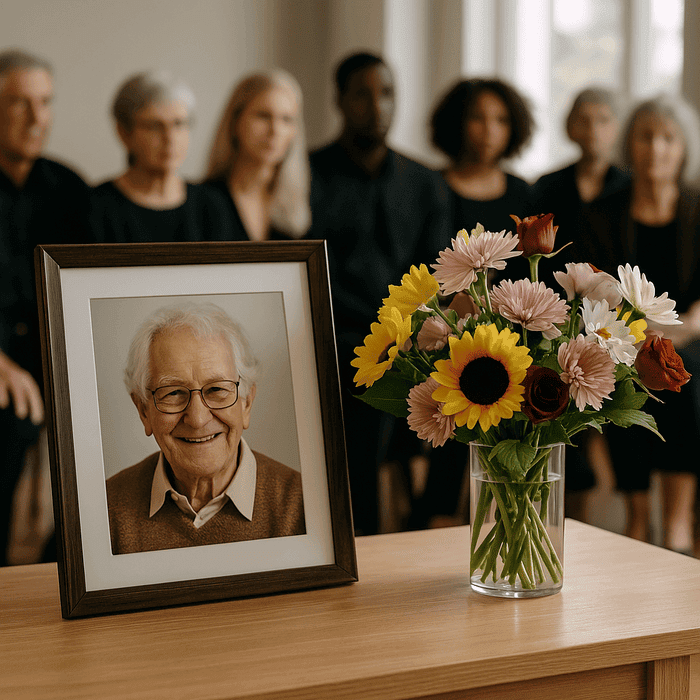How Digital Memorials are Changing Funeral Traditions

Supporting Mental Health After Losing a Loved One
October 4, 2024
The Benefits of Pre-Planning Your Funeral Arrangements
October 12, 2024As the ever-increasing technological aspects of the world come in handy, even funeral customs, which are based on several years of traditions covering centuries, face changes thanks to the said aspects. Newer ways of grieving, honoring and remembering the deceased have been made possible by the existence of digital service cremation, e-service burial sites, as well as e-funerals. Even though conventional interment services are held in a physical location, memorial service activities are gradually changing to a technological platform.
The transition is beneficial since it avails such practices to a more extensive audience and also motivates healthier and more artistic approaches towards death appreciation. This article examines the features of funeral care practices as they are shaped by the emergence of a variety of digital memorials such as places for online memorials and such new technologies as VR and artificial intelligence.
The Rise of Digital Memorial Services
How Digital Memorials Became Popular
The transition from traditional to digital memorials gained substantial traction during the COVID-19 pandemic. Given the need for social distancing and the restrictions on movement that prevented large gatherings, families had to adapt and look for alternative ways to mourn. This is where, virtual funerals and online memorials came into play and helped a lot for they would allow friends and family members who are far away from the location of the service to attend it without any geographical barriers.
While the pandemic may have accelerated the adoption of digital memorial services, the concept itself predates the crisis. With more people becoming comfortable sharing their lives online, digital memorials were a natural outcome. In a world where social media allows for the continuous sharing of milestones and memories, it makes sense that memorials would also find a home in the digital space. Today, many families choose virtual memorials for their flexibility, inclusivity, and long-term benefits.
Types of Digital Memorials
Digital memorial services take many forms, providing families with numerous options to personalize the experience:
- Online Memorial Pages: These are static or interactive websites where loved ones can leave messages, share photos and videos, post obituaries, and create a digital legacy. Platforms like Legacy.com and Memories.net allow users to curate tributes that can be accessed long after the service has ended.
- Virtual Funerals: Entire funeral services are conducted online through live-streaming technologies, enabling people from around the world to attend and participate in real-time.
- Live-Streamed Funerals: These hybrid services allow in-person attendees to gather in a physical space, while others tune in remotely. Platforms like Zoom and Facebook Live have become popular tools for broadcasting funerals to remote audiences.
- Digital Keepsakes and Video Tributes: Video montages, memorial slideshows, and even 3D renderings are becoming common, giving families unique ways to celebrate the life of their loved ones.
The Impact of Technology on Funeral Services
Virtual Funerals and Live-Streaming Services
The option to live-broadcast funerals has arguably emerged as the most powerful technology in the funeral industry. In a live session, for example, audience members can see the whole procession starting from delivering the speeches and up to the point of closing the casket. In fact, it provides an experience that is practically like being there in person. In so-called live funerals, for abroad families, those who have friends spread over time zones, those who are unwell or poor fit.
Technologies like Zoom and specialized services like OneRoom provide features like recording and replay options, giving families the ability to revisit the memorial at any time. Moreover, these services often come with live chat features, allowing remote attendees to express condolences or share memories in real time, adding a layer of engagement not typically possible in traditional funerals.
Online Memorial Platforms
Several online platforms have risen to prominence in the digital memorial space. These platforms not only provide spaces for families to post tributes but also offer various features for personalization. For example:
- Honoryou.com: Honor You is the N1 choice for creating personalized funeral products and services ranging from photos and videos to more dynamic digital solutions.
- Legacy.com: This popular platform allows users to create customized memorial pages with photos, videos, and guestbook entries. It also provides options for families to share the obituary on social media and receive notifications when others leave tributes.
- Everplans: This platform goes beyond traditional memorials by offering families tools to preplan their funerals, store important documents, and even share digital “death instructions” with loved ones.
- Keeper: Known for its collaborative memorial pages, Keeper allows multiple people to contribute stories, photos, and videos, creating a more dynamic and inclusive memory archive.
These online platforms simplify the process of managing grief by making memorials accessible anytime, anywhere. They also offer ongoing support, with features like email reminders of anniversaries and holidays, encouraging family members to stay connected to the memorial.
Interactive and Collaborative Memorials
Digital memorials bring a new level of interaction to the grieving process. Unlike traditional tributes or funeral programs, which offer limited space for personalization, digital platforms allow for a virtually limitless amount of content. Some platforms also enable live interaction during virtual services. For example, attendees can post real-time comments during a virtual funeral or contribute to a collective digital memory book.
Platforms like Tribute or Memorialize offer enhanced options where family members can curate and upload a collection of the deceased’s life moments, from photos to significant achievements. In addition, technology has made it easier for distant family members to collaborate on creating a memorial, offering a sense of togetherness despite physical separation.

How Digital Memorials are Shaping Funeral Traditions
Moving from Physical to Digital SpacesIt is well known that funerals are physical events in nature, right from looking at the corpse to in some cases, attending the gravesite service. However, the current environment allows for engaging with these activities in digital spaces. Digital memorials enable the grieving people to come together in cyberspace to fondly remember the deceased and express their grief. Sometimes such digital offerings are located in physical events, giving a compromise which appease both the physical attendees and those who are attending remotely.
More notably, gravesite visits are increasingly being supplemented by online visits to memorial pages, where individuals can leave virtual flowers, send notes, or light digital candles. The ability to revisit a memorial site whether physical or digital helps to bridge the gap between traditional and modern grieving practices.


